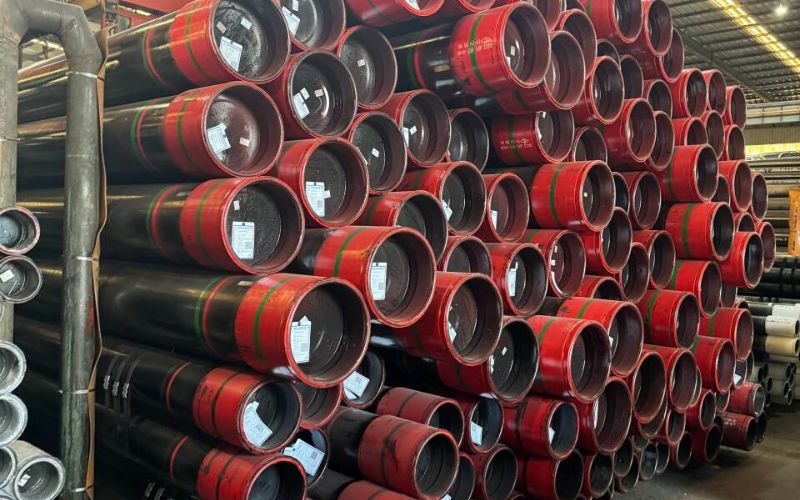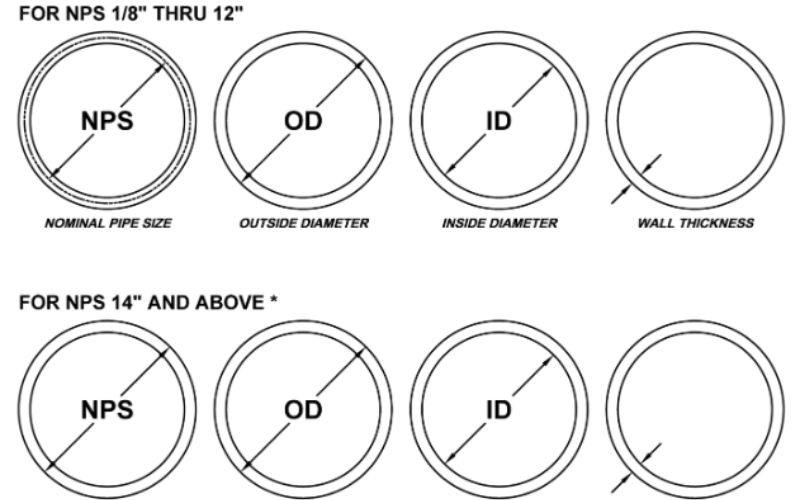Steel elbow fittings are the unsung heroes of countless industrial and commercial applications, seamlessly connecting piping systems and ensuring efficient flow management. Whether you’re a seasoned professional in metalwork or a newcomer exploring the world of steel fittings, understanding these components is crucial to optimizing performance and durability. This guide dives deep into everything you need to know about steel elbow fittings, from their different types and applications to the benefits they bring to various industries. By the end of this article, you’ll have the insights needed to make informed decisions, ensuring your systems are equipped with the right fittings for maximum efficiency and longevity.
What is a steel elbow and its primary uses?
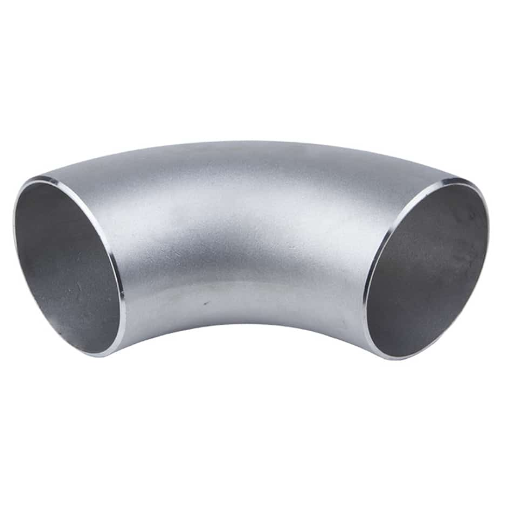
A steel elbow is a pipe fitting designed to change the direction of fluid flow within a piping system. It is typically shaped at an angle, such as 90° or 45°, depending on the requirements of the system. These fittings are primarily used in industries like oil and gas, construction, and plumbing to connect pipes, redirect flow, and optimize system layouts. Steel elbows are valued for their durability, resistance to pressure, and ability to withstand high temperatures, making them ideal for both commercial and industrial applications.
Understanding the steel elbow in piping systems
Steel elbows are critical in ensuring the efficient and safe operation of piping systems across various industries. These fittings enable pipes to change direction smoothly, reducing stress on the system and maintaining consistent flow. Depending on the angle required, common types include 45°, 90°, and 180° elbows, which are used to establish directional changes with minimal disruption to flow dynamics.
When selecting steel elbows, material properties such as tensile strength and corrosion resistance are crucial. For instance, stainless steel elbows are often preferred for their excellent resistance to rust and ability to endure high pressure and extreme temperatures. According to industry data, high-grade steel elbows can withstand pressure levels exceeding 5000 psi and temperatures upwards of 800°F, making them suitable for demanding environments like chemical plants and offshore oil rigs.
Furthermore, advancements in manufacturing techniques have enhanced the precision of steel elbow production. Modern methods like hot forming and induction bending enable tighter dimensional tolerances and greater customization to meet specific project requirements. This precision not only boosts system efficiency but also reduces the likelihood of leaks and mechanical failure, which are major concerns in critical infrastructure.
For industries aiming to reduce their environmental footprint, steel elbows present an eco-friendly option, as steel is highly recyclable. Reports indicate that over 80% of steel used in piping systems is recycled at the end of its lifecycle, aligning with sustainable practices and regulations.
By incorporating durable, high-performance steel elbows, industries can optimize their operations while ensuring compliance with safety standards and environmental regulations. These fittings continue to be an indispensable component in piping systems, combining durability, adaptability, and sustainability.
Common applications of steel elbow fittings
Steel elbow fittings are essential components in a variety of industries, providing reliable and efficient solutions for piping systems. Some of the most common applications include:
- Oil and Gas Industry
Steel elbow fittings are heavily used in oil and gas exploration and production. Their ability to withstand high pressure and extreme temperatures makes them suitable for transporting crude oil, natural gas, and other hydrocarbons. According to industry reports, steel piping systems in this sector often operate at pressures exceeding 10,000 psi, demanding robust fittings like steel elbows for durability and safety.
- Power Generation Plants
From coal-based plants to nuclear and renewable energy facilities, steel elbows are integral in managing steam, water, and other fluids. These fittings help maintain the integrity of high-temperature and high-pressure systems, with lifespan extended through advanced manufacturing techniques and corrosion-resistant coatings.
- Chemical and Petrochemical Industries
The chemical sector handles a wide range of corrosive and hazardous materials, requiring steel elbows with high resistance to rust and chemical reactions. Stainless steel variants, for instance, offer superior resistance to acids and alkalis, ensuring safe operations in critical environments.
- Water Treatment and Distribution Systems
Municipal and industrial water treatment plants rely on steel elbow fittings for transporting large volumes of water. Such fittings are favored due to their ability to resist wear caused by continuous water flow, achieving long-term efficiency in both potable and wastewater systems.
- Construction and Infrastructure
Steel elbow fittings also play a role in building plumbing systems, HVAC setups, and fire suppression systems. Their versatility ensures functionality in diverse settings, from residential to commercial and industrial construction projects.
- Food and Beverage Processing
Hygienic-grade steel elbows are widely used in processing lines for milk, beer, juices, and other consumables. These fittings comply with stringent cleanliness standards, ensuring product safety while maintaining consistent flow rates for production efficiency.
By catering to such varied applications, steel elbow fittings continue to ensure operational excellence and adaptability across industries, enabling dependable performance in critical environments.
Differences between 90 degree and 45 degree pipe elbows
A 45-degree elbow provides a gradual directional change with smoother flow, while a 90-degree elbow offers a sharper turn, saving space but causing more turbulence.
|
Key Point |
45° Elbow |
90° Elbow |
|---|---|---|
|
Angle |
45 degrees |
90 degrees |
|
Flow |
Smoother |
Turbulent |
|
Space |
Requires more |
Compact |
|
Pressure |
Lower drop |
Higher drop |
|
Applications |
Gradual turns |
Sharp turns |
How to select the right steel pipe elbow?
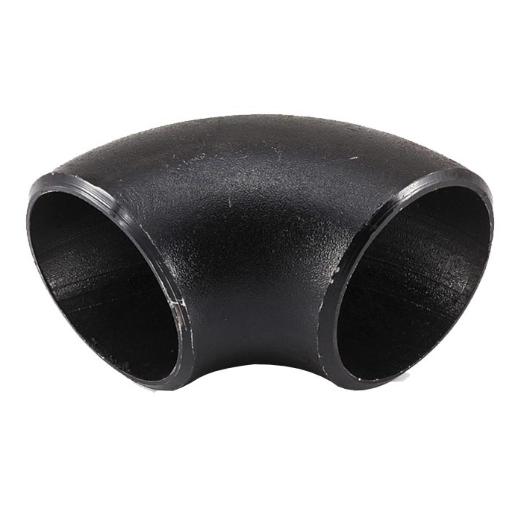
The precision of steel pipe dimensions depends on the kind of use the elbow will be put to. To choose the correct elbow, follow these steps:
- Establish the Desired Degree for the Turn
Decide, depending on the direction and how the piping is created, whether a 45 or 90-degree elbow will be adequate.
- Conceder Material Compatibility
It is necessary that the material of the steel elbow is resistant to corrosion or does not cause contamination to the fluid or any other thing it is to transport.
- Assess Pressure and Temperature ratings
Select an elbow with pressure and temperature ratings that can be able to be sustained by the system or its components.
- Understand Pipe and Connection System Dimension and Layout
Inspect pipeline diameter and connection system. Is it a threaded connection, or a welded connection? What size of steel pipe is best for the pipeline and connection type? Is the installation properly done?
- Competence in Adhering to Codes and Requirements of Industry
Make every effort to comply with health and safety standards and seek out elbow fittings that meet these requirements and any other relevant specifications.
Factors to consider: pipe size and diameter
In choosing a steel pipe elbow, one should be well aware of the linkage between piping size and its diameter for it can be related to the system’s efficiency. Pipe size, commonly referred to as nominal pipe size (NPS), and the outside diameter (OD) are not always as such the two do not have a direct relationship as such. For instance, a 2-inch pipe may have a different OD, say 2.217. Understanding such differences is extremely efficient to make sure that fitting can be harmonised through the use of adequate allowances thorough out the system.
Historically, one can refer to mostly standard sizes when selecting elbow for a particular pipe diameter in the charts provided by the industry. The bloody difference in diameter of the pipes in systems where the pipes will supposedly experience higher flow rates or higher pressure as small as a hair can result in issues like turbulence, pressure drops, and even structural collapse. This therefore makes proper alignment at the pipes’ specific diameters beneficial in saving energy, thus reducing operational costs.
Temperature gradient that lastly walls out interfaces the wall thickness of the pipe in the context of the schedule under consideration. With that said, the “schedule” is index of bore or the inner diameter of the pipe hence flow-carrying capacity as well as its ability to withstand internal forces. Other schedules less common like the 10, 40, or 80 are others where the thickness varies and as a result how well structurally they can handle stresses also. A tension-elbow should be well selected because to fit the system in the framework, outside the aligning of diameter also the referred to as fitting plays a key role.
Integrating all these aspects NPS, OD, Schedule, system characterization, warping and pressing; the designers and engineers can get better design and performance for even more sophisticated applications.
Material selection: carbon steel vs. stainless steel
Carbon steel is cost-effective and strong but prone to corrosion, while stainless steel is corrosion-resistant, durable, and aesthetically appealing but more expensive.
|
Key Point |
Carbon Steel |
Stainless Steel |
|---|---|---|
|
Cost |
Lower |
Higher |
|
Corrosion |
Prone |
Resistant |
|
Strength |
High |
Moderate |
|
Appearance |
Matte |
Shiny |
|
Maintenance |
High |
Low |
|
Heat Resist. |
Moderate |
High |
|
Workability |
Easier |
Harder |
Choosing between long radius and short radius elbows
Whether to fit the piping system with long radius (LR) or short radius (SR) elbows is an important consideration and hinges on a comprehensive evaluation of the specific requirements that the application calls for and the attendant pros and cons. Long radius elbows, with a centerline to centerline radius equal to 1.5 times the nominal pipe size (NPS), are designed to provide a smoother flow transition than in the case of changes to flow/flow direction. This in effect decreases the pressure drop and makes the flow more streamlined as a result of turbulences reduction. The construction of these innovations is the most appropriate for applications where there is a high pressure or high flow and where there is an expectation of economy and consistency in flow.
Compared to these, short radius elbows are more stacked and space efficient, in that their centerline to centerline radius PN is typically about the size. Short straight pipes where more bends are employed are more cost effective but also offer higher resistance per distance because of the accompanying sharp turns. They are particularly useful when working in restricted areas with the length of the pipes or the overall length of the pipeline requiring consideration in setting the maximum lateral offset even in straight pipe run. However, while you can use SR elbows in many applications, they do introduce more energy losses due to the greater friction and the risk of erosions resulting from High Velocity Water Flows in addition to the sharp angle changes due to the presence of 90 ̊ bends.
Short radius elbows are generally cheaper to purchase and assemble as their overall size and materials to be used are less as the case with the SR elbows. Nonetheless, it should be noted that some additional costs for service and maintenance might be anticipated when dealing with high pressure filled and high wear filled systems. For instance, laboratory studies have shown that LR elbows reduce consumption of electricity by nineteen percent in high flow systems when compared to SR elbows since such are reinforced more frequently.
Most importantly, the decision has to factor in the size of the building, the pressure within the system, the level of flow expected and the longevity of the equipment. It might be possible to achieve solutions with SR elbows and the style of design is less expensive in terms of overall cost, in low to moderate pressure environments, while in high performance uses such as efficiency and longevity, the LR elbow is the most applicable device. Therefore, it is possible thanks to a number of engineering and economic variables, for this solution to be appropriate for meeting both technical and financial objectives.
What are the specifications for a stainless steel 90 degree elbow?
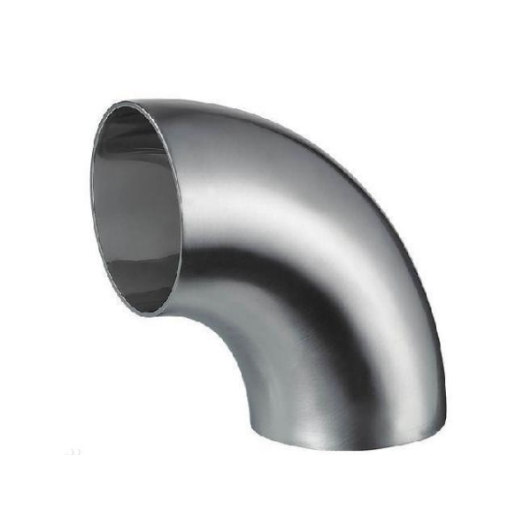
- Material Composition:
- Typically made from stainless steel grades such as 304, 304L, 316, or 316L, ensuring corrosion resistance and durability.
- Angle and Bend Radius:
- Designed at a 90-degree angle.
- Available with Short Radius (SR) or Long Radius (LR) options:
- SR Elbow: Radius equals the nominal pipe diameter.
- LR Elbow: Radius is 1.5 times the nominal pipe diameter.
- Dimensions:
- Sizes generally range from 1/2 inch to 48 inches.
- Wall thickness classified by schedule (e.g., SCH 10, SCH 40, SCH 80).
- Pressure Rating:
- Conforms to ASME B16.9 or similar standards, which specify pressure and temperature tolerances for various sizes and schedules.
- End Connections:
- Usually comes with beveled ends for easy welding.
- Applications:
- Commonly used in plumbing, piping systems, and industrial applications requiring directional changes.
These specifications are standardized for compatibility across systems and ensure reliable performance in various industrial and commercial environments.
Understanding the dimensions and thickness
When examining pipe fittings, the comprehension of their sizes and diameters holds the key importance to make sure the system functions as wanted. Size is usually identified according to nominal size (NPS) and schedule which in turn defines the outer and inner diameters and wall of the pipe. For instance a 90 degree elbow having a 6-inch NPS and Schedule 40 will have an OD of 6.625 inches, while the wall shall be 0.280 inches thick. It is these markings that allow the engineers to choose pipes and fittings that are rated for pressure and temperature as required by the performance of the system.
Grade is of importance since it is a dependent factor on pressure and the durability of the pipe. High pressure pipes have more tolerance due to their high thick walls but incur more weight and expense. Wall thickness is given in grade or metric measurements such as Sch 10, Sch 40, Sch 80, and Sch 160, with Sch 40 and general grades the most widely used.
Also, there exists one other trend of pipes conforming to certain dimensions that have been internationalized. Such accepted standards are, for example, American Society of Mechanical Engineers (ASME) standards B36.10M and B36.19M, and International Standards Organization or ISO. These standards ensure that any system or industry using such piping systems will have conformity levels facilitated and at what level; this helps in acquisiton, fitting of parts and connections.
This level of understanding is crucial in order to create solutions that can handle the requirements of the systems but still maximize the efficiency and the cost benefits inherent in the system. Right choice reduces how the parts wear out due to erosions as well as how they fail by promoting the reliability of the whole system.
Standard specifications and sch ratings
A pipe refers to a round hollow unit made from steel, copper or plastic material that is normally used to transport fluid. Standard pipe specifications along with the schedule of pipe (SCH) ratings establish key features such as how thick a pipe should be, its ability to handle pressure, and the inner and outer diameters of the pipe system. This is critical in establishing the behavior under whatever prevailing conditions, in many industries such as petroleum, also in construction.
The schedule numbers (SCH) represent the pipe’s wall thickness. For example, SCH 40 or SCH 80 are some of the most commonly used SCH ratings. Pipe nominal size, SCH 40 ratings are generally softer and used for applications like the conveyance of water under low pressure. Correspondingly, SCH 80 comes with a higher wall thickness such that it is most suitable in applications where exposure to high pressure or certain chemicals is expected.
In fact, the American Society of Mechanical Engineers (ASME) and the International Organization for Standardization (ISO) provide this information in greater details so that pipes used are of the appropriate quality levels. For instance, ANSI/ASME B36.10M requires for all pipe dimensions to be to with ASTM A530M, the carbon steel pipes have been standardized. B36.19M has similar walls, but it pertains to stainless steel pipes. Standard pressure-temperature ratings are particularly beneficial for preventing operational accidents by guaranteeing that pipes are not only fitting for the intended uses but for the right forms of application.
Designs who are interested in going out there to measure at job sites, who are more interested in the ducts, are the preference of pipes and above all would be this relationship of pipe size (NPS – Nominal Pipe Size), outside diameter (OD) and wall thickness. For instance, for a nominal pipe size of 6 inches, the pipe’s outside diameter may be 6.625 inches and the wall can have different thicknesses based on the SCH or the schedule rating of the pipe, indicating the variation in the dimensions of the wall with the changes in specifications.
The use of standard specifications and appropriate scheduling promotes connectivity of the system and its capacity to perform under different operating conditions. These guidelines should therefore be referred to at the system design and flow line design stages, or even when selecting piping materials to avoid unnecessary inefficiency or early deterioration.
Importance of corrosion resistance in stainless steel elbows
To keep stainless steel elbows functional for long periods, reliance on complying with corrosion resistance in applications handling aggressive and/or corrosive chemical compounds or environmental conditions is mandatory. The element of stainless steel which prunes it from cataclysm – rust, in most occasions, is a certain amount of chromium that forms Chromium Oxide (CrO2) a thin layer, with almost neutral pH protecting the steel, or being even more clear chemically on this, the stainless steel.316 (Ni 12%-18%, Cr 16%-26%) stainless of alloy, is designed to be chloride wear resistant, hence prevent pitting corrosion.
Observations have shown that sustained levels of chromium as low as 10.5% greatly improve the materials’ resistance to oxidation and corrosion pitting hence can be used in high moisture environs and areas that have aggressive chemicals (acids and chlorides). For example, it is confidently mentioned about the popularity of the grades 304 and 316 austenitic stainless steel for their very high resistance to general and localized corrosion. The 316 stainless steel grade with molybdenum added as an alloying element is designed to resist attack by chlorides, especially in marine and chemical processing applications.
The industries such as pharmaceuticals, food, and petrochemicals set and utilize extensive stainless steel elbows as the failure of material will necessitate tear down of the equipment or contaminating the products stored. According to research the use of corrosion-resistant stainless steel in case of machinery tubing brings major savings – the reduction in maintenance expenses is very large things during a 20-year period can be as long as 40 percent compared to traditional materials and supplies.
In addition, stainless steel elbows are constructed in such a way that they act as supports against aggressive operational conditions. They help in enhancing efficiently the flow of the liquid in the piping arrangement and even in severe morphological distortions avoiding point of weaknesses or other reasons for leakages in systems due to chemical or electrochemical corrosion. The expectations of these stainless steel elbows are met more during the time they are used in conditions of high pressures and temperatures where the life of equipment is crucial.
When applied even longer in service life, integrating the stainless steel elbows of the highest levels of corrosion resistance results in system safety and efficiency, rendering this a economic solution for extended service operations that can indeed be trusted. It is always necessary to deliberately match inappropriate stainless steel grade to the composition of the wear or adhesion so that the appropriate performance can be achieved.
How are weld elbows manufactured?
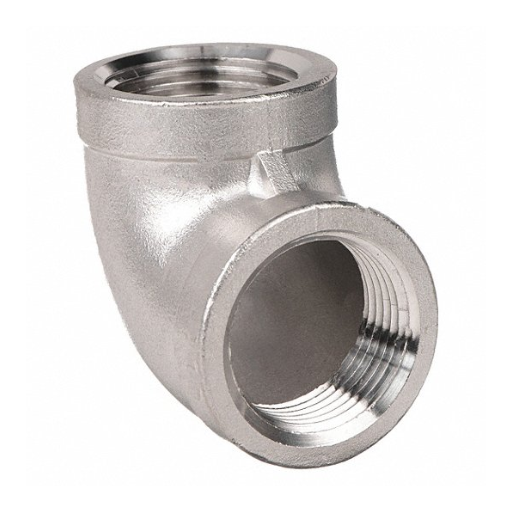
Forging weld elbows is a practice that is intended to provide for bendable parts that are strong enough. The practice normally involves mainly cutting of metal plates or metal pipes to specific sizes. Afterwards, these pieces are heated and formed using particular machinery to whatever specified form of an elbow. Furthermore, the shaped element has its edges fashioned to the effect of preparing it for joining by welding. When finished, the respective cuts are integrated or bolted as necessary, and lastly the cuts are welded over to blend in or obtain full strength. Alerted weld elbows are standardized according to its use: elongated to heat treatment and stringent quality control tests to ensure reliable structure and user safety in engineering designs.
Overview of the manufacturing process
Improved elements plays a relative role in the production procedure of pipe elbows due to increasing technology advantageous aspects of particularly the high degree of precision, efficiency and quality of the produced equipment used even up to the stages of production. At present, the more current methods of case these machines well utilize the computer – aided design and draft systems. This further helps in design elimination of the excessive constructive volumes, not to mention the possible wastage of materials
As order and technology evolve, induction bending for producing steel tube bends is dominating other methods. This is a process where a high frequency electrical current is applied to a certain area of the tube to be bend, making the applydge of that angle to no more than a fraction the required. Exploratory testing shows that up to about 35% of production time can be cut when using induction bending instead of the conventional approaches of bending steel, and unit embrittlement.
Similarly, the issue of the nature of the highly loaded elements is also significant in the bending process. More commonly utilized are the grades of structural stainless steel and heat resistant alloys such as alloy steels because of the extended service life and high resistance to various physical and chemical changes. Among the stock material available in the market, it is now estimated that 60% of the industrial pipe fittings consist of high alloy metals to be used in high pressure and temperatures to the effect of the chemical and power plants.
Inspection methods for the non-destructive testing, like as example, ultrasonic and radiographic inspections, are extremely important during quality assurance phase to meet the high standards of the industries. These can, especially, of far higher accuracy in resolution topped at 0.1mm so that all the components come out as per the safety and performance measures. Additionally, machblrating can even help to increase the strength of materials in order to be worked in compression or tension and ductile that’s the ability of the material to plastically deform without breaking.
With such cutting edge tools and methods, developers can make such fittings in the environment, displayed to tough impact and where waste products are enonomically. It is in this manner of dancing innovation and assurance that renders new production technologies a necessary cog in industrial development thereby increasing operational efficiency.
Role of seamless vs. butt weld elbows
Seamless elbows are stronger and corrosion-resistant, ideal for high-pressure systems, while butt weld elbows are cost-effective and suitable for general applications.
|
Key Point |
Seamless Elbow |
Butt Weld Elbow |
|---|---|---|
|
Strength |
High |
Moderate |
|
Corrosion |
Resistant |
Prone |
|
Cost |
Higher |
Lower |
|
Size Range |
Up to 24″ |
Up to 72″ |
|
Applications |
High-pressure |
General use |
Quality control in steel elbow manufacture
A key part in production of steel elbows does depend on the efficiency of the control measures applied, such measures help minimize the chances of poor levels of steel elbows being manufactured which can not perform well in different operating environments. The first step involved in steel elbow manufacturing is the procurement of good quality materials, with the likes of carbon steel, alloy steel, or stainless steel selected to suit the application involved in the work. Materials are inspected for their compliance with specifications before any work is started on them. This is done through material testing, which could involve chemical composition analysis, or even mechanical properties of the materials given.
Dimensional accuracy and non-destructive testing are amongst the top quality control measures in the manufacturing of steel elbows. Dimensional evaluations are done to make sure that the size and the way the part is made to fit are the right ones, yielding the right thickness, distances like diameter, and a proper angle bend. To check for problems in and on the surface of the material, the following: ultrasonic testing, radiography, and magnetic particle inspections is done to reduce possible defectivity areas which can lead to fractures or fall downs when in service.
The next necessary test is perhaps that one of pressure testing, which is carried out in a specified test environment in order to mimic operational services. Hydro testing provides a way by measuring the materials ability to contain fluids at unnaturally high levels of pressure, which is a fundamental requirement for stock in the use of oil and gas sectors as well as a host of other industrial applications. In addition, the hardness test will help in ascertaining the tensile strength of the steel elbows and at the same time maintaining the correct amount of percent ductility under such conditions.
Moreover, some innovation has seen the machines being more or less taken control of, since automation alongside digital controls in the manufacturing sector has brought in place measures that not just detect errors/ problems but as well aid in ensuring that the required quality goods are consistently produced. The application of such quality management approaches by manufacturers ensures the delivery of products that are higher performing in terms of safety, reliability, and environmental regulation, which most advanced industries seek for.
What are the benefits of using butt weld elbows in piping?
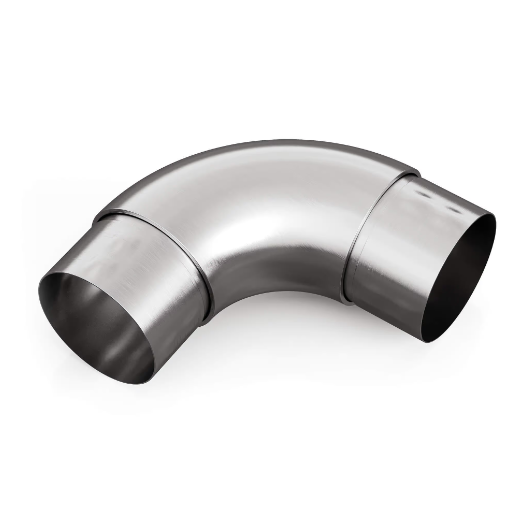
- Strength and Durability: Butt weld elbows provide a seamless connection, ensuring high strength and durability under various pressure and temperature conditions.
- Leak Reduction: Their welded joints minimize the risk of leaks, making them ideal for critical applications.
- Smooth Flow: The smooth interior surface of butt weld elbows reduces turbulence, enhancing flow efficiency within the piping system.
- Customization: They are available in a variety of sizes and angles, offering flexibility to suit specific piping configurations.
- Longevity: By maintaining structural integrity over time, they reduce the need for frequent replacements or repairs.
These qualities make butt weld elbows a dependable choice for industries requiring robust and efficient piping systems.
Advantages of butt weld connections
From my experience, the advantages of butt weld connections are clear. They provide exceptional strength and leak-proof joints due to seamless welding, ensuring durability even in high-pressure or high-temperature environments. These connections promote a smoother internal surface, reducing pressure drops and enhancing flow efficiency within the piping system. Additionally, their ability to be customized to different sizes and specifications makes them versatile for various applications. Overall, their reliability and long-lasting performance make them a preferred choice for critical piping needs.
Ensuring a secure weld with butt weld elbows
To ensure a secure weld with butt weld elbows, I focus on proper preparation and technique. First, I ensure the pipe ends and elbow are clean, bevelled, and perfectly aligned to reduce gaps during welding. Next, I use appropriate welding procedures and equipment tailored to the material and thickness, ensuring consistent heat input for a strong bond. Finally, I inspect the weld joint thoroughly to confirm its integrity and compliance with relevant standards, guaranteeing optimal performance and durability in the application.
Comparison with socket weld and threaded pipe fittings
I have to express preference for butt weld fittings in comparison to socket and threaded pipe welding. It is useful in all areas that require strong, long-lasting performance and easy operation. In contradistinction to socket welding, during welding also a possibility of corrosion forming a hole is eliminated, the problem with thread connection is that the strength of a welded object is harmful under high pressure condition, but with butt-welding, there is no such kind of problem. It has the strongest sheer of joints and the pipe size can be bigger. No negative impacts on them and they are friendly allowing quick decoration.
Reference Sources
- Experimental and Numerical Analysis of Ratcheting Behavior of A234 WPB Steel Elbow Joints Including Corrosion Defects
- Authors: Abolfazl Moradi et al.
- Publication Date: July 26, 2022
- Summary: This study investigates the ratcheting behavior of both intact and corroded 90° elbow pipe specimens made from A234 WPB steel. The research employs a combination of experimental fatigue tests and finite element analysis (FEA) to simulate the ratcheting behavior under varying loading conditions. Key findings indicate that the location of defects significantly influences the ratcheting response, with the intrados position being the most critical. The study also reveals that reducing load amplitude is more effective in decreasing ratcheting strain than altering the mean fatigue load(Moradi et al., 2022, pp. 451–468).
- Experimental Investigation of a Method for Diagnosing Wall Thinning in an Artificially Thinned Carbon Steel Elbow Based on Changes in Modal Characteristics
- Authors: Byunyoung Chung et al.
- Publication Date: November 1, 2022
- Summary: This paper explores a diagnostic method for detecting wall thinning in carbon steel elbows by analyzing changes in modal characteristics. The methodology involves creating artificially thinned elbow specimens and conducting modal analysis to identify shifts in natural frequencies. The findings suggest that modal analysis can effectively detect wall thinning, providing a non-destructive approach to assess the integrity of elbow joints in piping systems(Chung et al., 2022).
- Damage Analysis in Welded Steel Pipe Elbow Under Strong Cyclic Loading
- Authors: Fatna Telli et al.
- Publication Date: August 18, 2024
- Summary: This research focuses on the damage analysis of welded steel pipe elbows subjected to strong cyclic loading. The study utilizes numerical simulations to predict the structural response of the elbow under various loading conditions. The results indicate that the cyclic loading significantly affects the damage progression in the welded joints, emphasizing the need for careful design considerations in high-stress applications(Telli et al., 2024, pp. 2703–2717).
Frequently Asked Questions (FAQs)
Q: What are steel elbow fittings used for?
A: Steel elbow fittings are used to change the direction of flow in piping systems. They are essential components in various industries, including construction, shipbuilding, and plumbing, to ensure efficient flow and direction changes without causing leaks or pressure drops.
Q: What is the difference between a stainless steel pipe elbow and a carbon steel elbow?
A: A stainless steel pipe elbow is made from stainless steel, which is resistant to corrosion and rust, making it ideal for applications in harsh environments. A carbon steel elbow, on the other hand, is made from carbon steel, which is stronger and more durable but can corrode if not properly protected. The choice between the two depends on the specific requirements of the application.
Q: How does the radius of a 90-degree elbow affect its performance?
A: The radius of a 90-degree elbow, often referred to as the “radius 90,” affects the flow characteristics and pressure loss within the piping system. A larger radius can result in smoother flow and less pressure drop, making it suitable for high-flow applications. Conversely, a smaller radius may result in more turbulence and pressure loss.
Q: What does ‘schedule 40’ mean in relation to steel elbow fittings?
A: ‘Schedule 40’ refers to the wall thickness of the pipe and fittings. It is a standard that specifies the thickness of the pipe walls, which affects the pressure and temperature ratings of the fittings. Schedule 40 is commonly used in residential and commercial applications due to its balance of strength and cost.
Q: How is the outside diameter (OD) of a pipe relevant to its fittings?
A: The outside diameter (OD) of a pipe is crucial for selecting the correct fittings, including elbows, to ensure a proper fit. The OD must match the fittings to prevent leaks and ensure the integrity of the piping system.
Q: Can a 180-degree elbow be used in place of two 90-degree elbows?
A: Yes, a 180-degree elbow can be used to create a U-turn in the piping system, replacing two 90-degree elbows. This can reduce the number of joints and potential leak points, simplifying installation and maintenance.
Q: What are some common applications for stainless steel pipe elbows?
A: Stainless steel pipe elbows are commonly used in environments that require high corrosion resistance, such as chemical processing, food and beverage industries, and marine applications on ships. Their durability makes them suitable for both high-pressure and high-temperature applications.
Q: How does the choice of raw material affect the performance of steel elbow fittings?
A: The choice of raw material, such as stainless steel or carbon steel, affects the fitting’s resistance to corrosion, strength, and durability. Stainless steel is preferred for its corrosion resistance, while carbon steel is chosen for its strength and cost-effectiveness in non-corrosive environments.
Q: What factors should be considered when selecting a steel elbow fitting for a ship?
A: When selecting a steel elbow fitting for a ship, consider factors such as the material’s resistance to seawater corrosion, the pressure and temperature ratings, and the specific application requirements. Stainless steel pipe elbows are often preferred due to their corrosion resistance and durability in marine environments.



